A green office building blossoms in Cebu
Young members of a storied family shift property development in Cebu forward with a smart, green commercial tower, rising tall above an heirloom estate
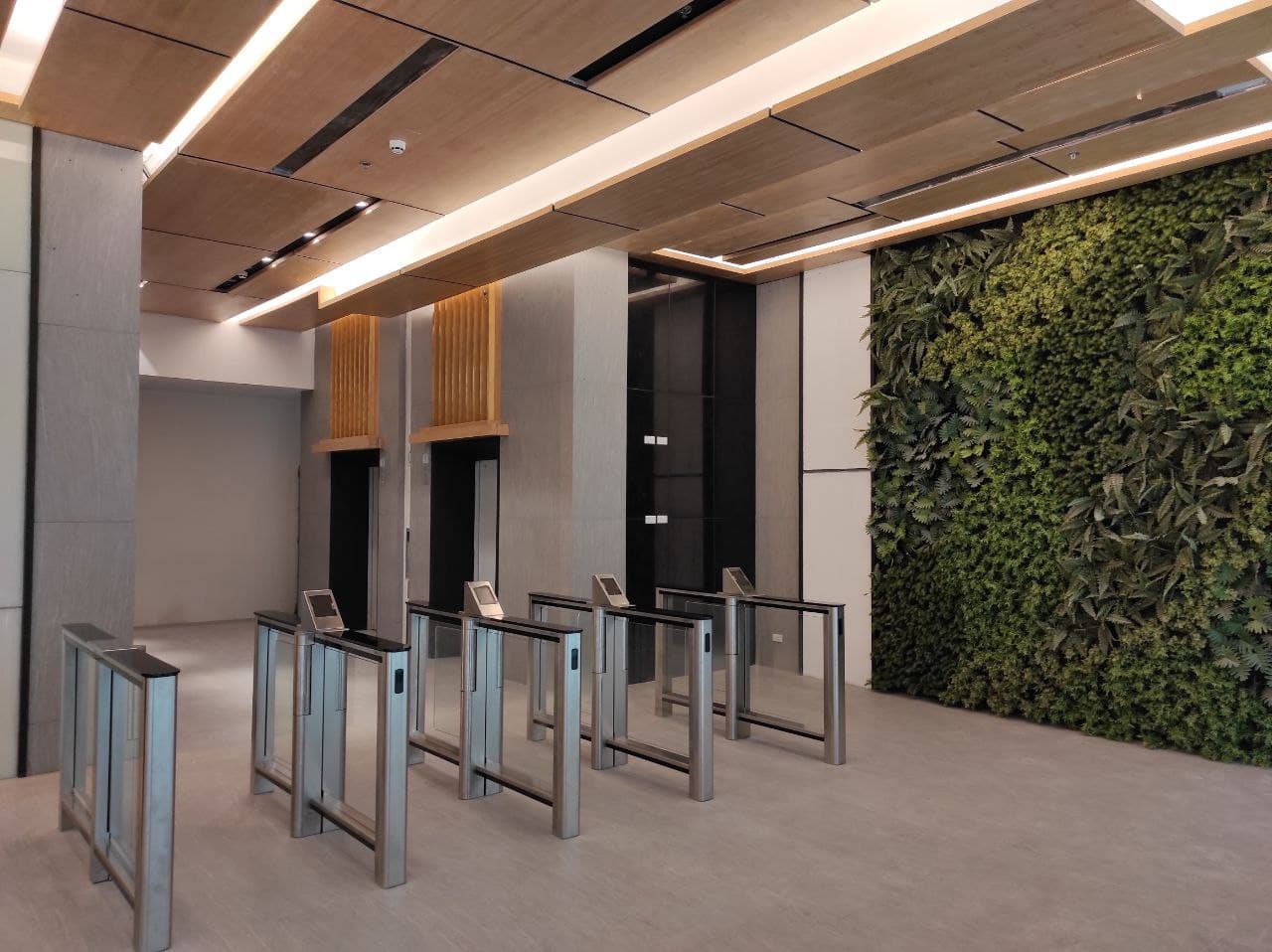
For more than 140 years, the Garcias and the Escaños have influenced trade and commerce in Cebu, with diversified interests in sectors ranging from electricity to interisland shipping. Now a new generation has propelled the patrician clan to the vanguard of property development.
JEG Tower @ One Acacia is the debut high-rise venture of JEG Development Corporation (JDC), the real estate enterprise by the descendants of business powerhouse Jose Escaño Garcia.
Pre-certified LEED Silver for core and shell, the grade A building represents a technological, sustainable leap for built spaces outside Manila. The 22-storey tower, designed by Casas Architects, recalls the Flatiron Building with its svelte profile, but with a diagonally slanting, tapered corner.
When Marko Sarmiento, Jose’s grandson and chief operating officer of JDC, performed strategic planning for the tower in 2015, vertical green building had not truly taken hold in Cebu yet. “We wanted to be known as the local developer that went green ahead of everybody else,” he says.
But the family has had quite the headstart, business-wise. Founding patriarch Don Fernando Escaño established in 1879 the enterprise Viuda y Hijos de F. Escaño Incorporada, which would later subsume the power distribution utility Visayas Electric Company (VECO).
JEG Tower @ One Acacia was built “with the Cebuano in mind,” says Ayla Gomez, Sarmiento’s cousin and brand manager at JDC. “We are mindful of our impact on the environment and to the future generations of Cebuanos.”
While JDC would not construct its first real estate project until 2004, the family has accumulated significant land holdings over the decades, including the tower site. The 1,697-square-metre lot at the corner of Archbishop Reyes Avenue and Acacia Street was sold to the family for around PHP10,000 (pre-inflation) in the early 1950s.
“My grandmother loves telling this story,” says Sarmiento of his forebear, Rosa Maria Garcia. “She and my great-grandmother (Señora Teresa Escaño Garcia) purchased it back then, and they had to pay in cash. She keeps saying that she was so scared at that time.”
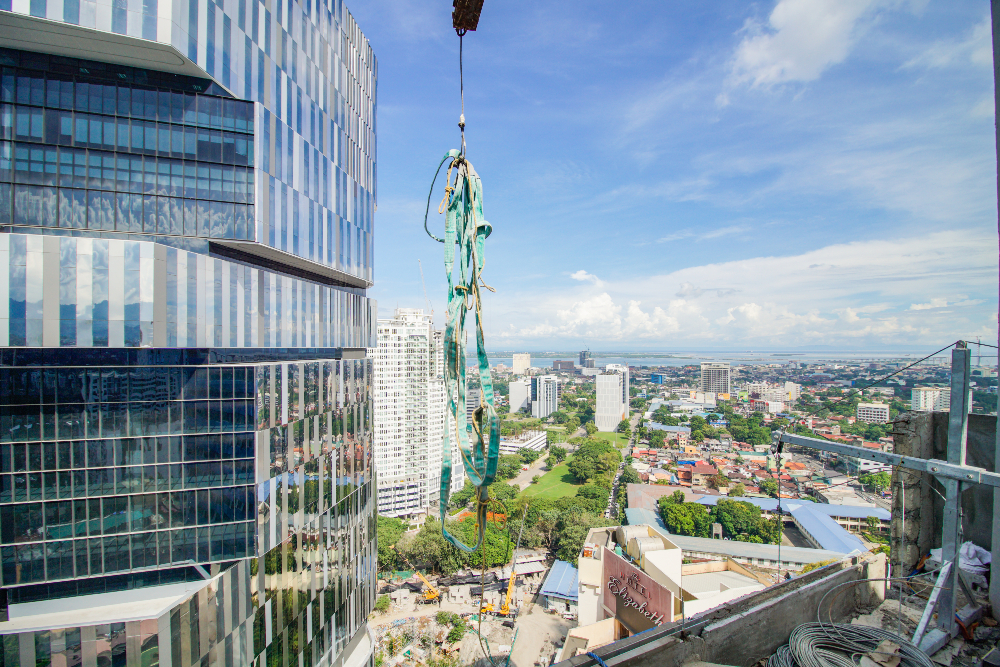
What had been “worth nothing” became a prime location close to Cebu Business Park. Enlisting Casas Architects, JDC developed onsite a low-rise strip mall, One Acacia Place, in the mid-2000s, with plans for vertical development in the next 10 years or so. “We wanted to learn the industry first,” says Sarmiento.
The North Carolina-educated executive presumed an intelligent, eco-conscious building would not pass muster with his elders at the JDC board. “We weren’t sure how they would react to it because going green is a more modern idea,” he says. “But they were very receptive to it because they knew we had to differentiate our product.”
JDC invested in “a lot of resources to build the best workspace” in Cebu, according to Stefan Garcia, estate and business development manager of JDC. With an estimated development value of $28m, JEG Tower @ One Acacia automates operations through a building management system (BMS), enabling landlords to control BMS-compatible equipment and fixtures from a computerised command centre.
JEG Tower @ One Acacia has Mitsubishi destination-oriented allocation system (DOAS) elevators, cutting the wait in the lobby to under a minute. DOAS interfaces with the turnstiles, telling passengers which lifts to use upon key-in and eliminating the need to push buttons. JDC installed a fresh air ventilation system, too, preventing stale air from recirculating in the 17,935-sqm building. Operable windows let more clean air into the building.
We weren’t sure how our elders would react to it because going green is a more modern idea. But they were very receptive to it because they knew we had to differentiate our product
Claiming energy savings of at least 12%, the tower meets a bulk of its power requirements through Vivant Corporation, JDC’s largest subsidiary. JDC also purchases power from Prism Energy, a joint venture between Vivant and leading renewable energy provider AboitizPower. Supplementing its reliance on the grid, JEG Tower @ One Acacia will be generating clean energy through rooftop photovoltaic panels from Vivant. “We feel that the solar aspect brings in a different dimension of power supply to the building,” Sarmiento says.
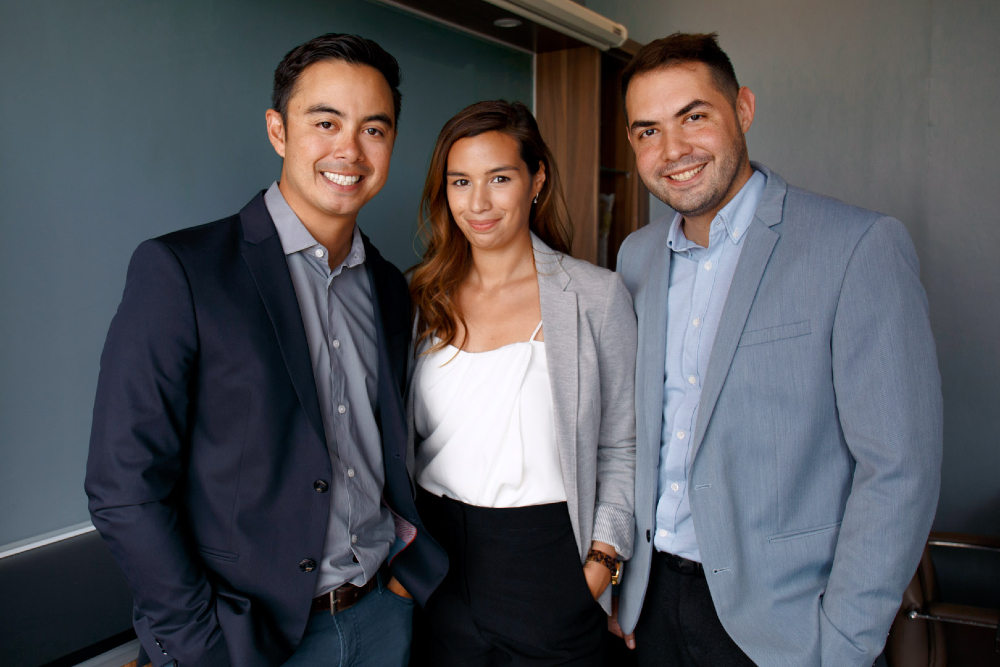
Rather than climate-control an entire floor, JDC cools multiple tenants at different rates through a flexible variable refrigerant volume (VRV) air-conditioning system. While “not the cheapest” supplier of VRV ACs, Daikin, the originator of this technology, surpassed the energy ratings of competitors in JDC’s technical evaluations.
“Whatever savings we had, we were able to reallocate these to procure other technologies and equipment that we deemed would help the building be more up-to-date,” Sarmiento says.
Making a stronger LEED case for the US Green Building Council (USGBC), JDC used recycled scrapped rebars, concrete with recycled ash, and bamboo veneers. The tower façade features a unitised curtain wall system, achieving 90% daylight views for occupants. Where it had to import materials, JDC opted for sustainably sourced options, like doors made of forest-certified timber from Malaysia.
More: Pandemic prompts Asian cities to face reality and push for a low-carbon, resilient future
“I guess more thought went into what materials we had to use,” says Sarmiento. “There is flexibility on where you can outsource your materials.”
Twenty percent of the development makes way for foliage, including a 284-sqm rooftop garden garlanded with native plants and wraparound wood decking. Tenants may rent the roof deck instead of a boardroom or just drink in 360-degree views of the strait and mountains.
To reach such heights, the tower required a strong, deep foundation secured with bored piles—the site’s soil composition was too soft. “The bored pile foundation took a bite into our budget and schedule,” says Sarmiento. “But when we presented it to our board, they didn’t bat a lid. They said, ‘We’re going to have to spend more, but safety outweighs everything else.’”
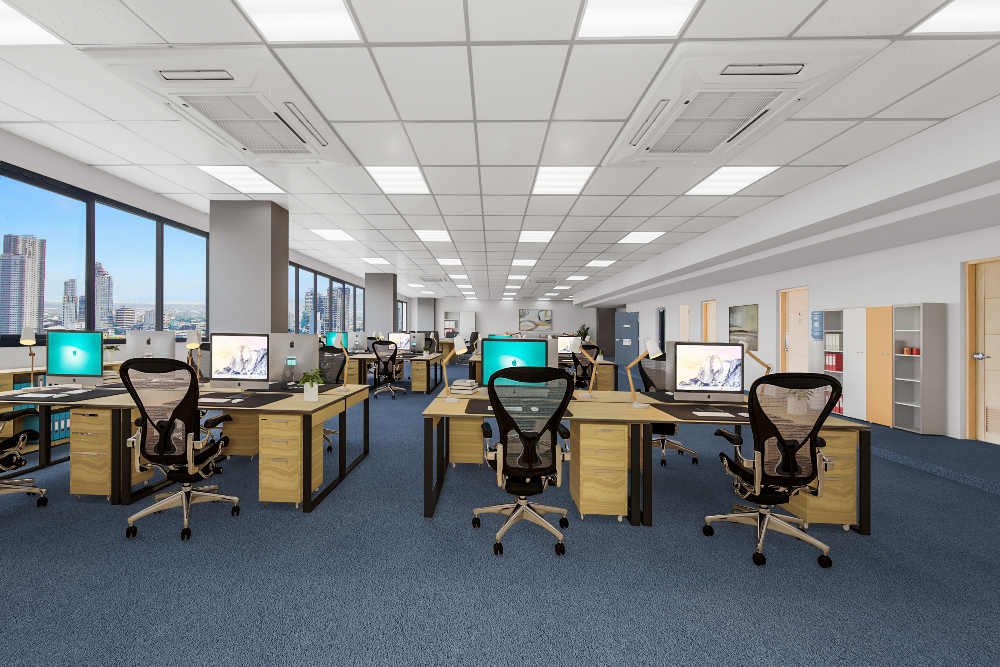
Guided by the lot’s trapezoidal shape, Casas Architects designed a centre core for the structure, housing the elevator shafts and stairways, instead of a side core. Occupants get a 92 percent efficiency ratio, for a net leasable area of 14,359 sqm, including four retail spots.
With a typical floor plate of 1,100 sqm, equal to nine bare shell units, the tower optimises usable space.
“The site was a bit challenging since it’s a trapezoidal lot in shape and a corner lot as well, including incremental setback requirements by the local government unit,” says Carmelo Casas, founder of Casas Architects. “We took advantage of this prominent corner to highlight a ‘tapering’ shape as our design feature.”
More: Green momentum grows in Asia, propelled by disruptors and innovators
One Acacia Place shut down in December 2016 in preparation for the tower construction. Some neighbours offered their properties as staging areas and temporary offices for JDC. Dakay Construction, the Cebu-based builder behind One Acacia Place and another JDC strip mall, The Gallery, assumed contractor duties, and the project broke ground in February 2018. Sy² + Associates, Inc, which engineered such skyscrapers as the PBCom Tower and Trump Tower in Manila, then accounted for the rising building’s seismic, wind and live loads, ensuring structural integrity in a typhoon- and earthquake-prone country.
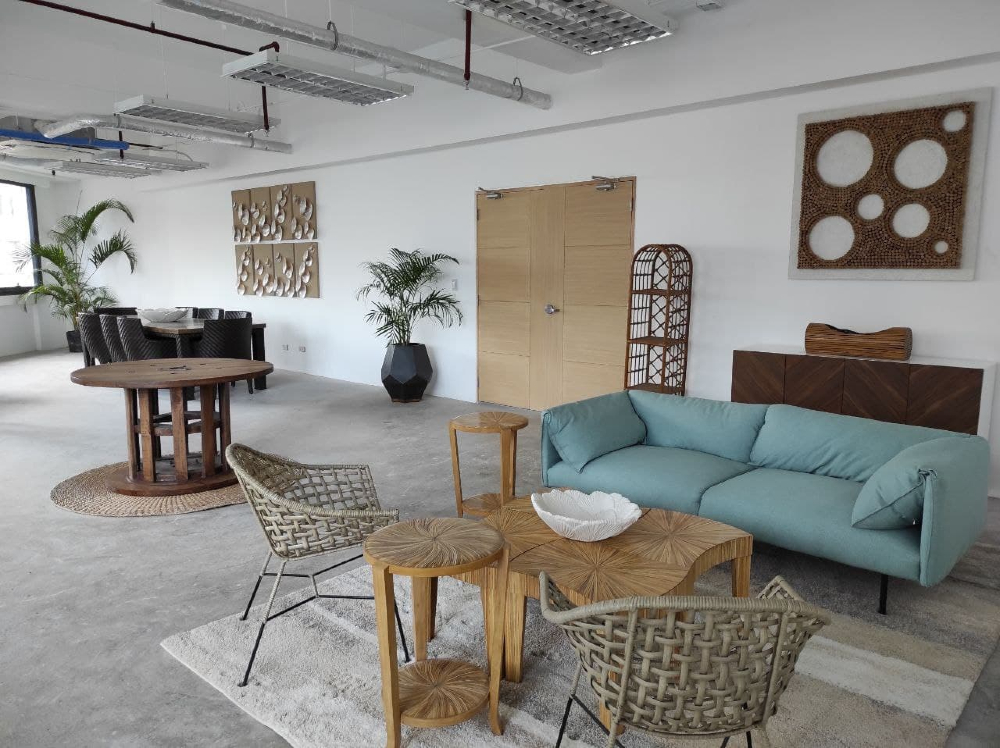
The tower topped off in 2019, but the pandemic prevented it from coming online in late 2020, deferring completion to 2021. “The biggest factor in the delay was getting the manpower during Covid,” says Sarmiento. “Some workers had to go home to their provinces and convincing them to come back was very difficult.”
JDC itself will be headquartered in the tower. Along with his demographic cohorts, Sarmiento has pipelined more socio-environmentally aware, innovative projects ahead, further infusing young blood into a kindred business empire.
For all its space-age trimmings, the tower toasts to the past. “We made sure our grandmother was there during the groundbreaking,” Sarmiento says. “She didn’t make it to the top because our elevators weren’t ready yet. But she was there.
“For her to see her husband’s name on that building, it means a lot to her and, of course, the family.”
The original version of this article appeared in Issue No. 167 of PropertyGuru Property Report Magazine.
Write to our editors at [email protected].
Recommended
Why everyone is moving to Selangor and Johor: Malaysia’s real estate comeback
Malaysia’s upturn in fortunes is especially prevalent in secondary destinations such as Selangor and Johor
Penang’s silicon boom: How the US-China tech war is supercharging local real estate
Penang’s booming semiconductor industry has created ripples within the local real estate sector
New leader, new opportunities: How Hun Manet is shaking up Cambodia’s real estate game
Hun Manet is overseeing decent economic growth and widening access to the country’s real estate market for foreigners
Singapore embraces inclusive housing reforms amid resilient demand
The Lion City’s regulatory strength continues to exert appeal for international investors








